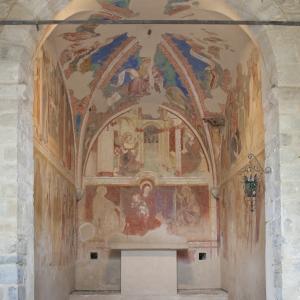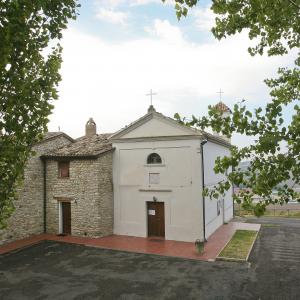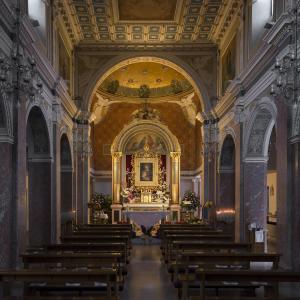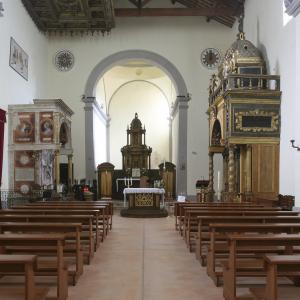Marian itinerary around Rimini, Valconca and Valmarecchia
A spiritual journey in the heart of the Rimini area among parish churches, evocative sanctuaries and small oratories. A journey through villages and hills to discover places where faith, history and tradition have been intertwined for centuries.
Distance: 120 km by car.
First stop Rimini Colonnella Church
This elegant Renaissance building, completed in 1514, houses a miraculous Marian image: a fresco depicting the Madonna with Child, still perfectly preserved today.
A place steeped in history and devotion, ideal for inaugurating the Marian journey in the Rimini area.
Second stop Gemmano Sanctuary of Our Lady of Carbognano
It is perched on the hill overlooking the Conca Valley. It originated around 1260 when Franciscan friars built a convent on the remains of an ancient Roman temple. Consecrated to Our Lady in 1500, over the centuries it became a destination for pilgrims attracted by its profound spirituality and the graces attributed to the Virgin.
.
Third stop Montefiore Conca Sanctuary of the Madonna di Bonora
Rest in the Conca valley and reach the famous Sanctuary of the Madonna di Bonora. Created around an image of the Madonna breastfeeding, painted by a hermit in the 14th century, the fresco stands out on the high altar, evoking centuries of faith and attracting numerous pilgrims every year. The sanctuary's fame grew further in 1833, when a seriously ill young woman recovered after praying before the image, an event recognised as the church's first historically verified miracle.
Fourth stop Trebbio di Montegridolfo Sanctuary of the Blessed Virgin of Graces
A few kilometres away is the Santuario della Beata Vergine delle Grazie in Trebbio. Its main altar is adorned with a splendid altarpiece depicting the miraculous apparition of the Madonna in 1459, painted faithfully following the accounts of the visionaries of the time.
Fifth stop Pennabilli Madonna delle Grazie
The Madonna of Graces of Pennabilli, in the heart of Montefeltro è one of the most famous and loved Marian images. On the 3rd Friday of March 1489, this image was seen weeping, an event that profoundly marked the history of the place and increased its devotion.
The fresco, dating from around 1432, is kept in the Church of the Augustinians, dedicated to St Christopher and founded in the 11th century. An ancient place, rich in spirituality, that makes Pennabilli an essential stop on the Marian pilgrimage route in the Montefeltro region.
Sixth stop Maciano Santa Maria dell'Oliva
Remain in Montefeltro and reach Maciano, where another miraculous Marian apparition is linked to the church of Santa Maria dell’Oliva. The building, in addition to its spiritual value, is a true artistic jewel: its structure is part of a splendid series of architectures that testify to the spread of the harmonious forms of the Urbino Renaissance throughout the Montefeltro region.
Seventh stop Talamello
The itinerary concludes in Talamello, where, just before the cemetery, stands a splendid late Gothic chapel from 1437, entirely frescoed. Commissioned by the Franciscan Giovanni Seclani, bishop of Montefeltro, it depicts him kneeling before the Virgin and Child, surrounded by saints and biblical scenes.
The cell was once preceded by a four-sided portico open to accommodate wayfarers and pilgrims, many of whom have graffitied their names on the painted plaster with the date of their passage and sometimes their origin or destination, leaving invaluable elements for understanding the frequentation of the place.
A perfect ending to an itinerary that combines art, faith and history in a landscape of rare beauty.
Tips for true professionals
- Take all the time you need to enjoy this slow, unhurried itinerary.
- Between one stop and the next, let yourself be enchanted by the landscapes and their colours that change with the seasons.
- In Talamello, do not miss the opportunity to buy the famous Fossa cheese, a real delicacy to take home.



